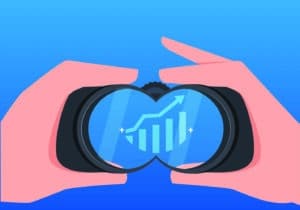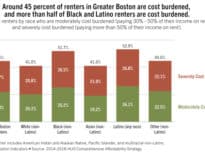The problems have hardly gone away. Inflation, still near a 40-year high, is punishing households. Rising interest rates have derailed the housing market and threaten to inflict broader damage. And the outlook for the world economy grows bleaker the longer that Russia’s war against Ukraine drags on.
But for now anyway, the U.S. economy has likely returned to growth after having shrunk in each of the first two quarters of 2022.
At least that’s what economists expect to see Thursday when the Commerce Department issues its first of three estimates of gross domestic product – the broadest measure of economic output – for the July-September period.
Economists surveyed by the data firm FactSet have predicted, on average, that GDP grew at a 2 percent annual rate in the third quarter. That would reverse annual declines of 1.6 percent from January through March and 0.6 percent from April through June.
Consecutive quarters of declining economic output are one informal definition of a recession. But most economists say they believe the economy has so far skirted a recession, noting the still-resilient job market and steady spending by consumers. Most of them have expressed concern, though, that a recession is likely next year as the Federal Reserve continues to steadily ratchet up interest rates to fight inflation.
Preston Caldwell, head of U.S. economics for the financial services firm Morningstar, notes that the economy’s contraction in the first half of the year was caused largely by factors that don’t reflect its underlying health and so “very likely did not constitute a genuine economic slowdown.” He pointed, for example, to a drop in business inventories, a cyclical event that tends to reverse itself and generally doesn’t reflect the state of the economy.
By contrast, consumer spending, fueled by a healthy job market, and stronger U.S. exports likely restored the world’s biggest economy to growth last quarter.
Thursday’s report from the government comes as Americans, worried about high prices and recession risks, are preparing to vote in midterm elections that will determine whether President Joe Biden’s Democratic Party retains control of Congress. Inflation has become a signature issue for Republican attacks on the Democrats’ stewardship of the economy.
The risk of an economic downturn next year remains elevated as the Fed keeps raising rates aggressively to try to tame stubbornly high consumer prices. The central bank has raised its benchmark short-term rate five times this year, and it’s expected to announce further hikes next week and again in December. Chair Jerome Powell has warned bluntly that taming inflation will “bring some pain” – namely, higher unemployment and, possibly, a recession.
Higher borrowing costs have already hammered the home market. The average rate on a 30-year fixed-rate mortgage, just 3.09 percent a year ago, is approaching 7 percent. Sales of existing homes have fallen for eight straight months. Construction of new homes is down nearly 8 percent from a year ago.
Still, the economy retains pockets of strength. One is the vitally important job market. Employers have added an average of 420,000 jobs a month this year, putting 2022 on track to be the second-best year for job creation (behind 2021) in Labor Department records going back to 1940. The unemployment rate was 3.5 percent last month, matching a half-century low.
But hiring has been decelerating. In September, the economy added 263,000 jobs – solid but the lowest total since April 2021.
International events are causing further concerns. Russia’s invasion of Ukraine has disrupted trade and raised prices of energy and food, creating a crisis for poor countries. The International Monetary Fund, citing the war, this month downgraded its outlook for the world economy in 2023.







